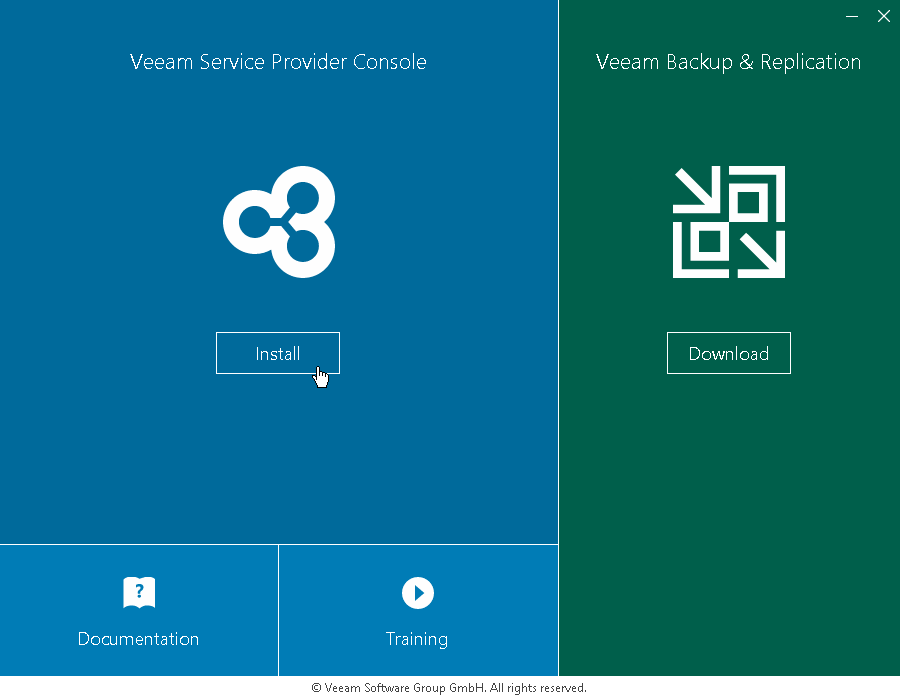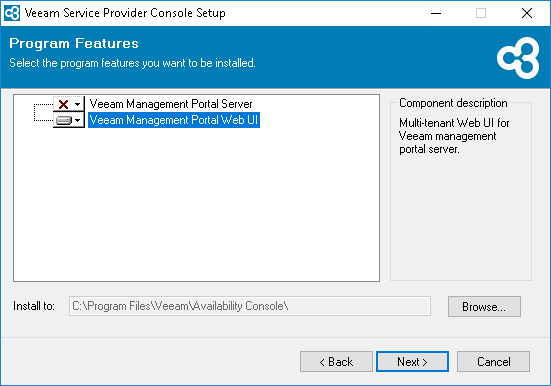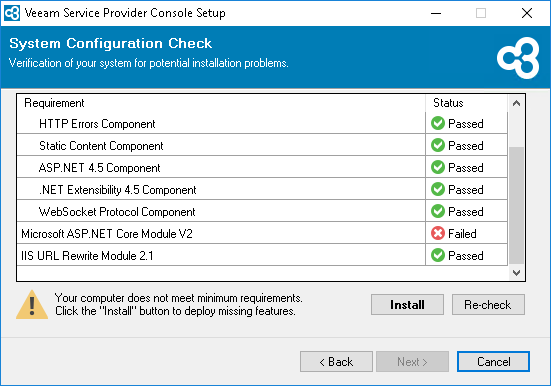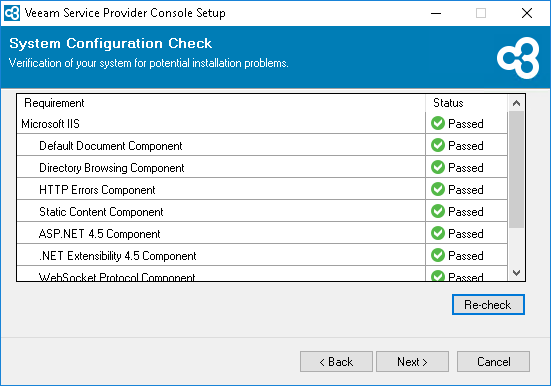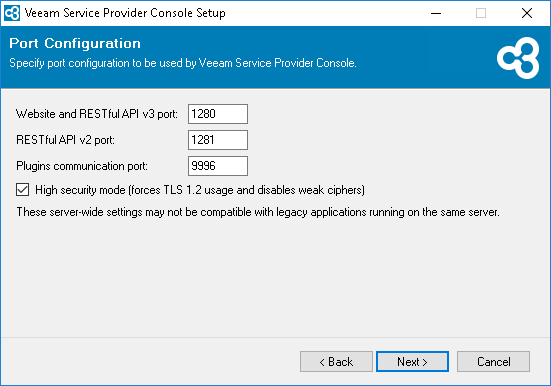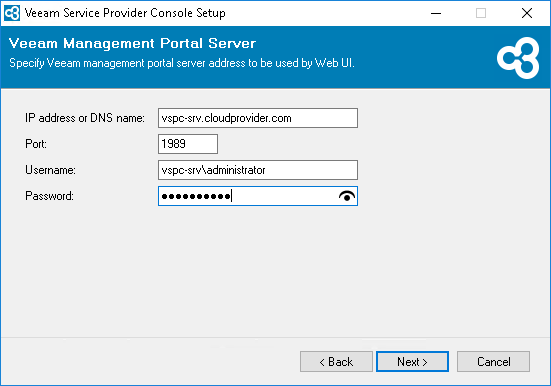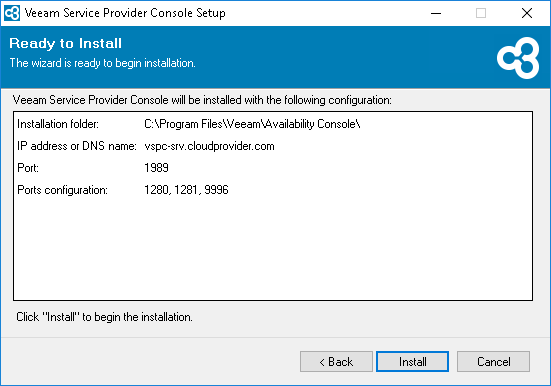 This is an archive version of the document. To get the most up-to-date information, see the current version.
This is an archive version of the document. To get the most up-to-date information, see the current version.Installing Web UI Component
To install the Veeam Service Provider Console Web UI component:
- Log on as Administrator to the machine where you want to install the Veeam Service Provider Console Web UI component.
- Mount the installation image using disk image emulation software or burn the downloaded image to a CD/DVD.
If you are installing Veeam Service Provider Console on a VM, use built-in tools of the virtualization management software to mount the installation image to the VM.
- Run the Setup.exe file from the image to launch the setup splash screen.
- On the splash screen, click the Install tile to launch the Veeam Service Provider Console Setup wizard.
Note: |
The installer will verify what version of .NET Framework is currently present on the machine. If the required version is not found, the installer will prompt to automatically install .NET Framework that is included with the Veeam Service Provider Console installer. After installing .NET Framework, you might need to reboot the machine, and then continue with installation. |
- At the License Agreement step of the wizard, read and accept the Veeam license agreement and 3rd party components license agreement.
If you do not accept the license agreement terms, you will not be able to continue the installation.
- At the Program Features step of the wizard, choose to install Veeam Service Provider Console Web UI only.
If necessary, you can change the installation directory at this step.
- At the System Configuration Check step of the wizard, check what prerequisite software is missing.
Before proceeding with the installation, the installer will perform system configuration check to determine if all prerequisite software is available on the machine. To learn what software is required for Veeam Service Provider Console, see System Requirements.
If some of the required software components are missing, the setup wizard will offer you to install the missing software components and enable missing features automatically. To install the missing software components and enable missing features automatically, click the Install button.
You can cancel automatic software installation. In this case, you will need to install the missing software components and enable missing features manually (otherwise, you will not be able to proceed to the next step of the setup wizard). After you install and enable all required software components, click Re-check to repeat the system configuration check.
- At the Security Certificates step of the wizard, select certificate that will be used to establish secure connection with Veeam Service Provider Console Web UI component.
You can choose an existing certificate from the Certificate Store on the machine where you run installation. If for the Veeam Service Provider Console web site you generate or choose a self-signed certificate, you will need to configure a trusted connection between Veeam Service Provider Console and the client application. For details on importing certificates, see Microsoft Docs.
For details on security recommendations and certificates, see section Installing Security Certificates of the Veeam Service Provider Console Guide for Service Providers.
- At the Port Configuration step of the wizard, specify the following settings:
- In the Website and RESTful API v3 port field, type a number of the port that will be used to access the Veeam Service Provider Console website through a web browser and to interact with the Veeam Service Provider Console RESTful API v3.
The default port number is 1280.
- In the RESTful API v2 port field, type a number of the port that will be used to interact with the Veeam Service Provider Console RESTful API v2.
The default port number is 1281.
- In the Plugins communication port field, type a number of the port that will be used to interact with ConnectWise Manage plugin.
The default port number is 9996.
- To enforce TLS 1.2 encryption protocol for communication between the components, select the High security mode check box.
Important! |
The High security mode option disables using weak ciphers for all communications with the machine on which Veeam Service Provider Console Web UI component runs. This may interfere with the operation of 3rd party software installed on the same machine. |
- At the Veeam Service Provider Console Server step of the wizard, specify settings that the Web UI component must use to connect to the Server component:
- In the IP address or DNS name field, specify a FQDN or IP address of a machine on which you have installed the Veeam Service Provider Console Server component.
- In the Port field, specify the number of a port that the Web UI component will use to communicate with the Server component.
The default port number is 1989.
- In the Username and Password fields, type credentials of the account under which Veeam Service Provider Console Web UI component will connect to the Server component.
The account must have local Administrator permissions on the machine where Veeam Service Provider Console Server component is installed.
- At the Ready to Install step of the wizard, review the provided configuration settings and click Install.
- After installation completes, click Finish to exit the wizard.
